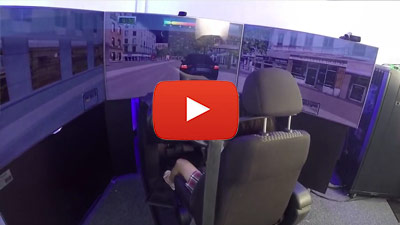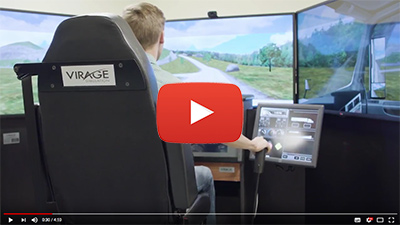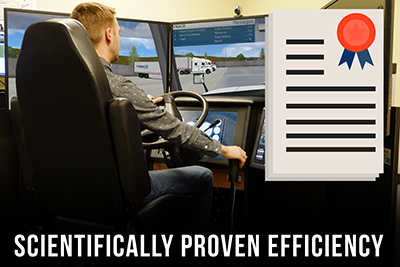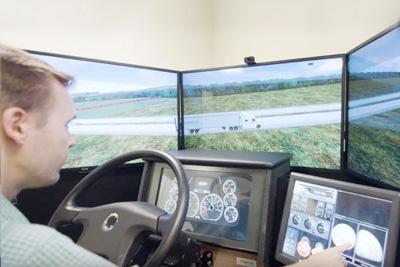Proficiency-based truck simulator training bolsters FMCSA Safety Mission
Decades of aviation industry experience teach us that proficiency-based truck simulator training will improve CDL training standards. The widespread adoption of proficiency-based truck simulator training by the trucking industry is facilitated by the new guidelines issued by the U.S. Department of Transportation’s Federal Motor Carrier Safety Administration (FMCSA). Instead of proposing a minimum number of training hours aimed at achieving minimal competency, the new FMCSA rules now require that CDL candidates achieve high standards of proficiency, a level of mastery above minimal competence, in both theory knowledge and on-road driving skills. The FMCSA is granting truck-training experts the freedom to use their own judgment to select the most efficient means to help CDL candidates become proficient and safer before they apply for their first jobs.
Over the past decade, Virage Simulation has collaborated with truck driver training experts and independent researchers to develop and validate its GoldenTM programs, a series of Proficiency-based-Progress (PbP) truck simulator-based driver training scenarios. The Golden ShifterTM targets gear changes in non-synchronized transmissions, the Golden MirrorTM focuses on backing manoeuvers and the Golden SteeringTM is for turns. These PbP programs are ideal for adult learners to progressively acquire and practice driving skills at their own pace with continuous objective feedback. Several independent studies have demonstrated that driving skills are acquired up to two and half times faster in the truck simulator without an instructor than in the truck with an instructor. Several truck schools from the National Association of Publicly Funded Truck Driving Schools use the VS600M Truck Simulator (VS600M).
There are many reasons why truck simulators and the Golden programs are so complementary to in-truck, behind-the-wheel (BTW) training. Instructors and trainees appreciate the low-stress environment of the simulator where mistakes can be reviewed, analyzed, understood and corrected in total safety and comfort. BTW, “seat of your pants”, training is more productive when preceded by and reinforced with truck simulator practice. Instructors have observed that combining simulator and on-road training accelerates the learning process. The truck simulator can also extend the range of training possibilities by allowing learners to practice driving in any combination of road, weather and traffic conditions. Instructors can use the Student Tracker to monitor individual progress relative to group norms.
The advantages of using driving simulators in a classroom environment are still being discovered. Some learners may have difficulty fully appreciating the effects of physics on larger and heavier vehicles, e.g. in rollover situations, or the impact of their driving habits on fuel consumption. Classroom use of engaging, interactive programs on the truck simulator allows learners to directly experience what all the words actually mean. This teaching technology increases attention, reduces learning time and increases long-term retention. We all know that the most significant lessons we have learned come directly from what we do, not from what we read or hear or passively view. Truck school administrators also experience real benefits from simulator-based training in terms of reduced costs for instructor salaries, fuel, vehicle maintenance and repairs. The Community College in New Brunswick has adopted this approach and is using two trucks and two simulators to deliver their CDL courses (http://ccnb.ca/english.aspx). In summary, truck simulators and well designed training scenarios like the Golden programs allow learners to experience all the aspects of driving that lead to skill proficiency in the safest, most efficient and least costly manner possible. The new ruling by the FMSCA has created a great opportunity to significantly improve truck driver training.









